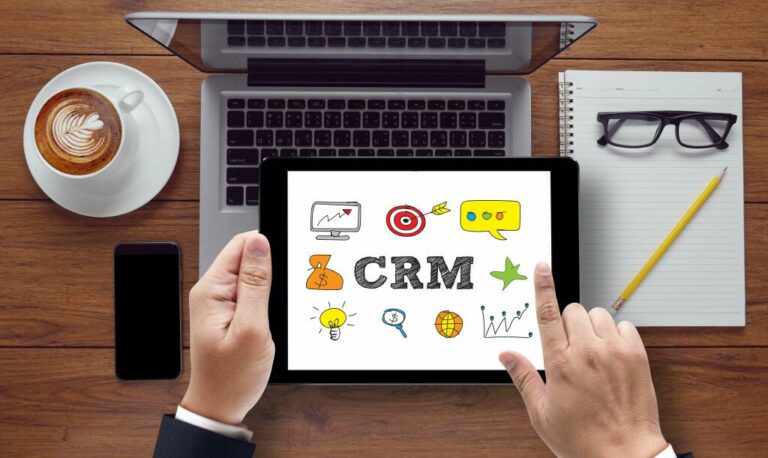- 12 de August de 2020
- Posted by: optehub
- Category: Software Development
Содержание
In contrast to SI-4 which correlates the various cyber monitoring information, this control enhancement correlates monitoring beyond just the cyber domain. Such monitoring may help reveal attacks on organizations that are operating across multiple attack vectors. Automated Alerts This control enhancement focuses on the security alerts generated by organizations and transmitted using automated means.
Establishing the appropriate threshold levels and correctly configuring and building testing scripts ensure that an excessive number of false positives are not produced and resources are not used ineffectively. A responsible party needs to be assigned to review exceptions, evaluate results, and help make decisions related to future activities (e.g., changes, modifications). Building on its existing capabilities, ChaosSearch plans to deliver true multi-model data access by supporting full-text search, SQL, and machine learning queries against a single back-end data store.
- The information system discovers, collects, distributes, and uses indicators of compromise.
- Please complete this reCAPTCHA to demonstrate that it’s you making the requests and not a robot.
- Continuous Monitoring is an automated process that leverages specialized software tools to empower DevOps teams with enhanced visibility of application performance, security threats, and compliance concerns across the entire DevOps pipeline.
- Such monitoring may help reveal attacks on organizations that are operating across multiple attack vectors.
- Top continuous security monitoring solutions integrate with organizations’ infrastructure and detect devices as soon as they attempt to connect to the network, thereby helping to thwart cyber threats introduced by unauthorized or risky devices.
Like an enterprise risk assessment, the audit plan is constantly evolving and changing. Year 1 of implementation requires the creation of a perpetual inventory of current and future business information systems and the identification of external resources (e.g., management reports, financial analysis, etc.). Doing so may make implementation take longer, but it will allow for the process to mature much faster. Testing Of Monitoring Tools Testing intrusion-monitoring tools is necessary to ensure that the tools are operating correctly and continue to meet the monitoring objectives of organizations. The frequency of testing depends on the types of tools used by organizations and methods of deployment. Collection, aggregation, and monitoring of other internal reports is another essential focus of a continuous auditing program.
The organization correlates information from monitoring tools employed throughout the information system. Analyze Communications Traffic Anomalies Anomalies within organizational information systems include, for example, large file transfers, long-time persistent connections, unusual protocols and ports in use, and attempted communications with suspected malicious external addresses. The organization connects and configures individual intrusion detection tools into an information system-wide intrusion detection system.
Organizations determine whether the visibility requirement applies to internal encrypted traffic, encrypted traffic intended for external destinations, or a subset of the traffic types. The organization employs automated tools to support near real-time analysis of events. Now let’s take a look at 10 of the leading continuous monitoring software tools for DevOps teams and the capabilities they provide.
A Simplified Guide To Kubernetes Monitoring
DevOps teams rely on continuous monitoring software tools for visibility into the performance and security of applications, infrastructure, and services in the cloud. Our list includes the most popular and widely used continuous monitoring tools we’ve encountered, highlighting their capabilities and key features along with drawbacks that limited their functionality for end users. Continuous security monitoring solutions give organizations the visibility they need to identify vulnerabilities and attacks. They provide real-time views to help IT professionals respond proactively and quickly to threats and compromises.
To help you implement a comprehensive CM strategy for your next software development project, we’ve put together a list of the most powerful software tools with continuous monitoring capabilities we’ve come across in our travels. Give us a shout if there are major ones we’ve missed or important details we’ve overlooked. Continuous monitoring tools are a critical component of the DevOps pipeline, providing automated capabilities that allow developers to effectively monitor applications, infrastructure, and network components in the production environment. Technological support is needed to improve operational performance and business excellence. Testing scripts are developed and written using the audit rules and process information created in the second and third steps.
The information system discovers, collects, distributes, and uses indicators of compromise. Automated Response To Suspicious Events Least-disruptive actions may include, for example, initiating https://globalcloudteam.com/ requests for human responses. If you are at an office or shared network, you can ask the network administrator to run a scan across the network looking for misconfigured or infected devices.

Simultaneously, rules need to be configured before the continuous auditing procedure is implemented. Individuals Posing Greater Risk Indications of increased risk from individuals can be obtained from a variety of sources including, for example, human resource records, intelligence agencies, law enforcement organizations, and/or other credible sources. The monitoring of individuals is closely coordinated with management, legal, security, and human resources officials within organizations conducting such monitoring and complies with federal legislation, Executive Orders, policies, directives, regulations, and standards. The organization employs a wireless intrusion detection system to identify rogue wireless devices and to detect attack attempts and potential compromises/breaches to the information system. Managing results and following up requires the greatest use of oversight resources to ensure the message delivered is appropriate and correct.
Results are incorporated into internal audit’s risk identification and assessment process, which can help with resource allocation. The process then repeats or continues through the same steps by adding more complex items. Evaluate and assess the projected benefits of including the business cycle/area in the continuous auditing process.
Get Journal Of Accountancy News Alerts
Application Monitoring – Tools and processes for monitoring the health and performance of released applications in a production environment. Infrastructure Monitoring – Tools and processes for monitoring the data centers, networks, hardware, and software needed to deliver products and services. Learn about continuous security monitoring solutions in Data Protection 101, our series on the fundamentals of information security.
Continuous auditing is a method used to perform control and risk assessments automatically on a more frequent basis. Evidence of malicious code is used to identify potentially compromised information systems or information system components. The organization employs automated tools to integrate intrusion detection tools into access control and flow control mechanisms for rapid response to attacks by enabling reconfiguration of these mechanisms in support of attack isolation and elimination. After development, the next step is to align the continuous auditing model with internal audit’s methodology and processes.
The current data analytic landscape focuses on the use of “scripts” that can identify duplicates and quantitative outliers. Yet, there is little guidance for script implementation or use of existing resources. Sumo Logic’s query language limits some analytic capabilities, especially low-level analysis of log data. Nate Lord is the former editor of Data Insider and is currently an account manager covering the southeast, Great Lakes, and Latin America regions at Digital Guardian.

Internal audit collects and analyzes these data and, where appropriate, includes them as part of its greater analysis. Alerts can be transmitted, for example, telephonically, by electronic mail messages, or by text messaging. Organizational personnel on the notification list can include, for example, system administrators, mission/business owners, system owners, or information system security officers. It’s clear that organizations of all sizes must take steps to secure their data and systems in the ever-growing threat landscape.
A Framework For Continuous Auditing: Why Companies Dont Need To Spend Big Money
Top continuous security monitoring solutions integrate with organizations’ infrastructure and detect devices as soon as they attempt to connect to the network, thereby helping to thwart cyber threats introduced by unauthorized or risky devices. Continuous security monitoring solutions classify devices by type, ownership, and operating system to deliver insights and visibility that enable preventive and reactive actions when the network is at risk. Continuous security monitoring is essential today because organizations depend on technology and data to complete key business processes and transactions.

Top continuous security monitoring solutions give companies complete end-to-end visibility to identify security misconfigurations or vulnerabilities and help them to meet regulatory information security compliance complete with analytics and reports. Continuous security monitoring provides real-time visibility of users and their devices when they attempt to connect to or work on an enterprise network. Continuous security monitoring gives organizations the ability to constantly look over their network to stay one step ahead of cyber threats. With continuous security monitoring, IT professionals can monitor and verify security and compliance requirements regardless of whether data resides locally or in a datacenter, virtual environment, or the cloud.
Benefits Of Continuous Security Monitoring
Continuous security monitoring enables organizations to gauge their security posture in real time to identify weaknesses or potential compromises and mitigate them quickly. Continuous security monitoring is a type of security solution that automates security monitoring across various sources of security information. Continuous security monitoring solutions provide real-time visibility into an organization’s security posture, constantly monitoring for cyber threats, security misconfigurations, or other vulnerabilities.

DevOps has become the dominant application development and delivery methodology today, embraced… DevOps teams that have already invested in Prometheus can store and query native Prometheus metrics, and write queries using the Prometheus query language or API while benefiting from the native troubleshooting and event correlation features of Sysdig. In Atlassian’s recently released DevOps Trends Survey, over half of respondents said that their organizations had a dedicated DevOps team and 99% of respondents indicated that DevOps has had a positive impact on their organization. DevOps has become the dominant software development and deployment methodology over the past decade.
How Do Devops Tools Benefit Your Business?
Indicators Of Compromise Indicators of compromise are forensic artifacts from intrusions that are identified on organizational information systems . IOCs provide organizations with valuable information on objects or information systems that have been compromised. IOCs for the discovery of compromised hosts can include for example, the creation of registry key values. IOCs for network traffic include, for example, Universal Resource Locator or protocol elements that indicate malware command and control servers. The rapid distribution and adoption of IOCs can improve information security by reducing the time that information systems and organizations are vulnerable to the same exploit or attack.
Log Analytics 2021 Guide
He has over 7 years of experience in the information security industry, working at Veracode prior to joining Digital Guardian in 2014. Nate enjoys learning about the complex problems facing information security professionals and collaborating with Digital Guardian customers to help solve them. Be the first to know when the JofA publishes breaking news about tax, financial reporting, auditing, or other topics.
Consideration should be given to the cost, risk, benefit, and cadence of the proposed frequency of the process being audited. The nature of some continuous audit objectives, such as deterrence or prevention, may also determine frequency and variation. Periodically, information is received or objectives change that cause internal audit to adjust the audit plan. A list of all business systems and the data available from those systems should be created. For instance, if your company has a system for the storage and collection of HR data, it’s likely that system has reporting capability beyond a list of employees and their contact information. Organizations seeking to implement or improve continuous auditing often already have the data and tools necessary.
A Definition Of Continuous Security Monitoring
Sometimes, a company spends thousands of dollars to implement these processes but does not get value from them. This article discusses the appropriate methods organizations should use in implementing continuous auditing procedures. Integrated Situational Awareness This control enhancement correlates monitoring information from a more diverse set of information sources to achieve integrated situational awareness.
Unauthorized Network Services Unauthorized or unapproved network services include, for example, services in service-oriented architectures that lack organizational verification or validation and therefore may be unreliable or serve as malicious rogues for valid services. The organization correlates information from monitoring physical, cyber, and supply chain activities to achieve integrated, organization-wide situational awareness. Uses the traffic/event profiles in tuning system-monitoring devices to reduce the number of false positives and the number of false negatives. Our unique approach to DLP allows for quick deployment and on-demand scalability, while providing full data visibility and no-compromise protection. Read how a customer deployed a data protection program to 40,000 users in less than 120 days.
Keep Tabs On Your Network, Infrastructure, And Applications With Devops Continuous Monitoring Tools
For example, for a manufacturing company with factories in four states, inventory turnover might be a key metric. By using data analytics to examine variances in inventory turnover, it is likely that the reasons that a factory is underperforming could be pinpointed. These organizations have applied data analysis that alerts them to repeating check or invoice numbers, recurring and repetitive amounts, and the number of monthly transactions.
Companies also have a greater number of independent contractors and remote workers on staff, increasing their attack surface and adding channels for data loss. Companies may have strict policies in place, but employees continue to use applications and devices that are not approved and put data at risk. Correlate Monitoring Information Correlating information from different monitoring tools can provide a more comprehensive view of information system activity. How continuous monitoring helps enterprises The correlation of monitoring tools that usually work in isolation (e.g., host monitoring, network monitoring, anti-virus software) can provide an organization-wide view and in so doing, may reveal otherwise unseen attack patterns. Understanding the capabilities/limitations of diverse monitoring tools and how to maximize the utility of information generated by those tools can help organizations to build, operate, and maintain effective monitoring programs.